
views
X
Research source
The results will be the same if the employee receives weekly paychecks, and usually very close if the employee receives monthly paychecks.
- Divide an annual salary by 52 to determine the weekly pay.
- You can divide the weekly pay by 5 to get a daily rate.
- You can divide the number of worked days by the number of workdays in a pay period to determine a prorate percentage.
- Deduct taxes the same way you normally would and take sick time and vacation time into account when prorating someone’s salary.
Daily Pay Method

Determine the annual salary before taxes. Start with the official annual salary of the employee. Don't worry about taxes for now; they are deducted at the end of this section.

Divide the annual salary by the number of work weeks in a year. This is the amount of money the employee earns in one week. Use the annual salary before taxes and other deductions. For an employee that works the entire year, there are 52 work weeks. For example, an employee that makes $30,000 a year earns 30,000 ÷ 52 = $576.92 per week.
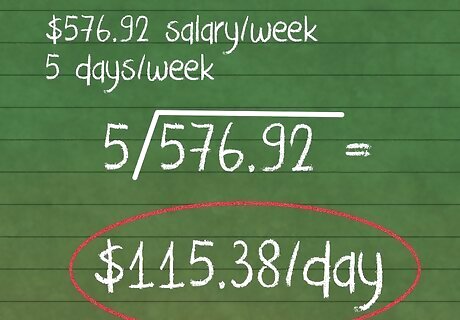
Divide the weekly salary by the number of workdays per week. This is the daily salary, or amount of money earned by the employee each workday. Continuing our example, the employee with a weekly salary of 576.92 works 5 days a week. Her daily salary is 576.92 ÷ 5 = $115.38 per day.
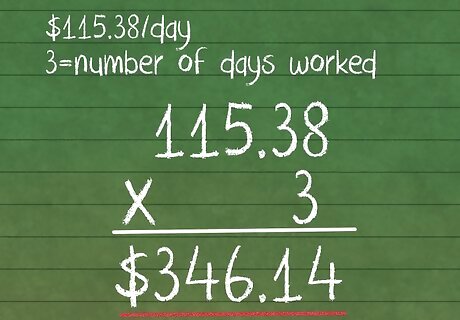
Multiply the result by number of days worked. Count the number of days the employee worked during the pay period you are prorating. Multiply this by the daily salary you calculated above. If our example employee worked 3 days during the prorated period, she should receive 115.38 x 3 = $346.14.

Deduct for taxes as usual. Don't forget that prorated salary payments count as normal, taxable wages. This means that you'll need to deduct a percentage of the earnings for income and payroll taxes, just as you would an ordinary paycheck. If the employee has a retirement account (401k, etc.) or another special deduction set up, include this deduction as well. If you are in the United States, see our article on withholding federal tax for more information. Additional state taxes may also apply.
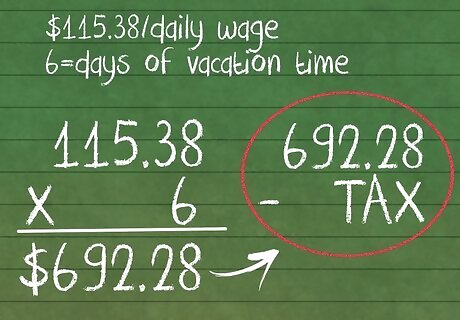
Compensate former employees for unused time off. If the employee is leaving the company with accrued vacation days or sick days, the employer is usually required by law to pay the employee for this time. Use the same method to calculate how much to pay per day: If the same employee from above has accumulated 6 days of vacation time, she should be paid an additional 115.38 (her daily wage) for each day, or a total of 115.38 x 6 = $692.28. Deduct taxes from this amount as well.
Percent of Pay Period Method
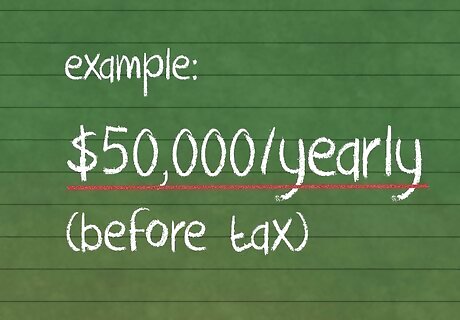
Write down the employee's yearly salary before taxes. This is the first step toward finding out how much the employee earned during the partial work period. Use the official salary, not the amount received after taxes.
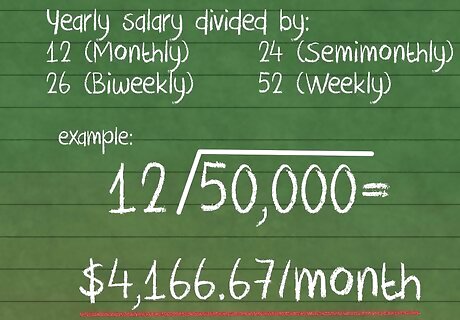
Find the amount earned each pay period. This is the amount the employee receives in each paycheck. If you don't have this information available, calculate it based on how often the employee is paid: Monthly paychecks → divide annual salary by 12 Semimonthly (twice per month), → divide by 24. Biweekly (every two weeks) → divide by 26. Weekly → divide by 52. For example, an employee that makes $50,000 and receives monthly paychecks earns 50,000 ÷ 12 = $4,166.67 each month.

Find the fraction of days worked during the partial pay period. Look at the specific pay period you are prorating and calculate the following: Write down the number of days the employee worked (at the salary level you are calculating). Divide by the number of workdays in that pay period. Count carefully. Don't assume each pay period has the same number of workdays. For example, an employee only worked 14 days in September, when normally he would work 22 days. His fraction of days worked is /22.
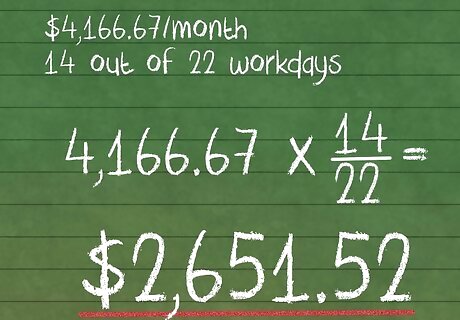
Multiply this fraction by the amount earned each pay period. This tells you exactly how much you need to pay the employee. For example, an employee that makes $4,166.67 each month but only worked 14 out of 22 workdays in September would receive a prorated paycheck of 4,166.67 x /22 = $2,651.52.

Deduct for taxes. Calculate any withheld taxes, deductions for retirement funds, and other deductions just as you would for that employee's regular paycheck.
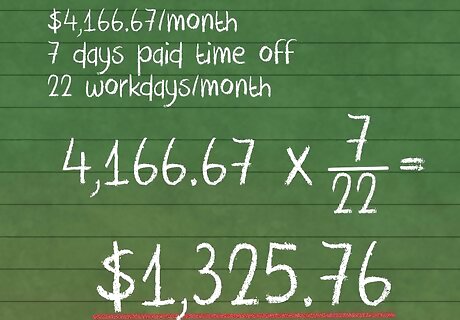
Pay former employees for unused sick time and vacation time. In these cases, employers are usually required by law to "cash out" on any time off an employee has earned but not yet used. Pay the employee's normal wages for this time using the the same prorating method above. For example, if our employee in the example above has accumulated seven days of paid time off, he should be paid an additional 4,166.67 x /22 = $1,325.76. This compensation is typically taxable, just like normal pay.



















Comments
0 comment